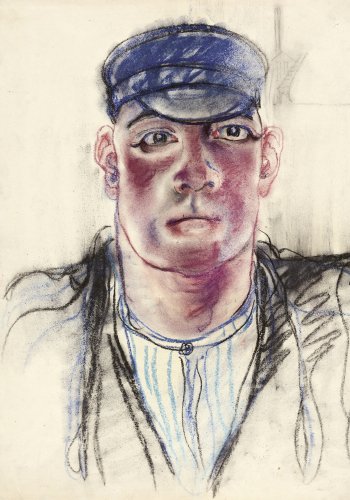AN EXCEPTIONAL ARTIST
Elfriede Lohse-Wächtler (Dresden 1899–1940 Pirna) is a significant artistic voice of the early twentieth century. Her dynamic, empathetic visual language is without comparison in the art of New Objectivity.

She leaves home at the age of sixteen, and is active as ‘Nikolaus Wächtler’ in Dresden avant-garde circles from 1918 onwards. Friends of the headstrong ‘Laus’ include the painters Otto Dix, Conrad Felixmüller and Otto Griebel, the poet Rudolf Adrian Dietrich and the Dadaist Johannes Baader. Lohse-Wächtler’s years in Hamburg, from 1925 to 1931, are a personally stressful but artistically highly productive time.
Wretched living circumstances and a failed marriage lead to psychiatric problems and in 1929 to hospitalisation for the first time. But Elfriede Lohse-Wächtler wrests powerful works of art from her delicate mental state. She confidently enters even male worlds and restricted areas, painting in the port and St. Pauli, and creating atmospheric scenes of brothels and pubs, unconventional portraits and haunting self-portraits in quick succession.
Elfriede Lohse-Wächtler’s story of self-empowerment ends with her compulsory hospitalisation and state-sanctioned annihilation: in 1940 she is killed in the course of the National Socialist murder of invalids known as ‘Aktion T4’.
We now devote a retrospective of almost 100 works from 25 public and private collections to this exceptional artist. This first solo exhibition in Hamburg since 1999 is prompted by the 125th anniversary of Elfriede Lohse-Wächtler’s birth on 4 December 2024.










